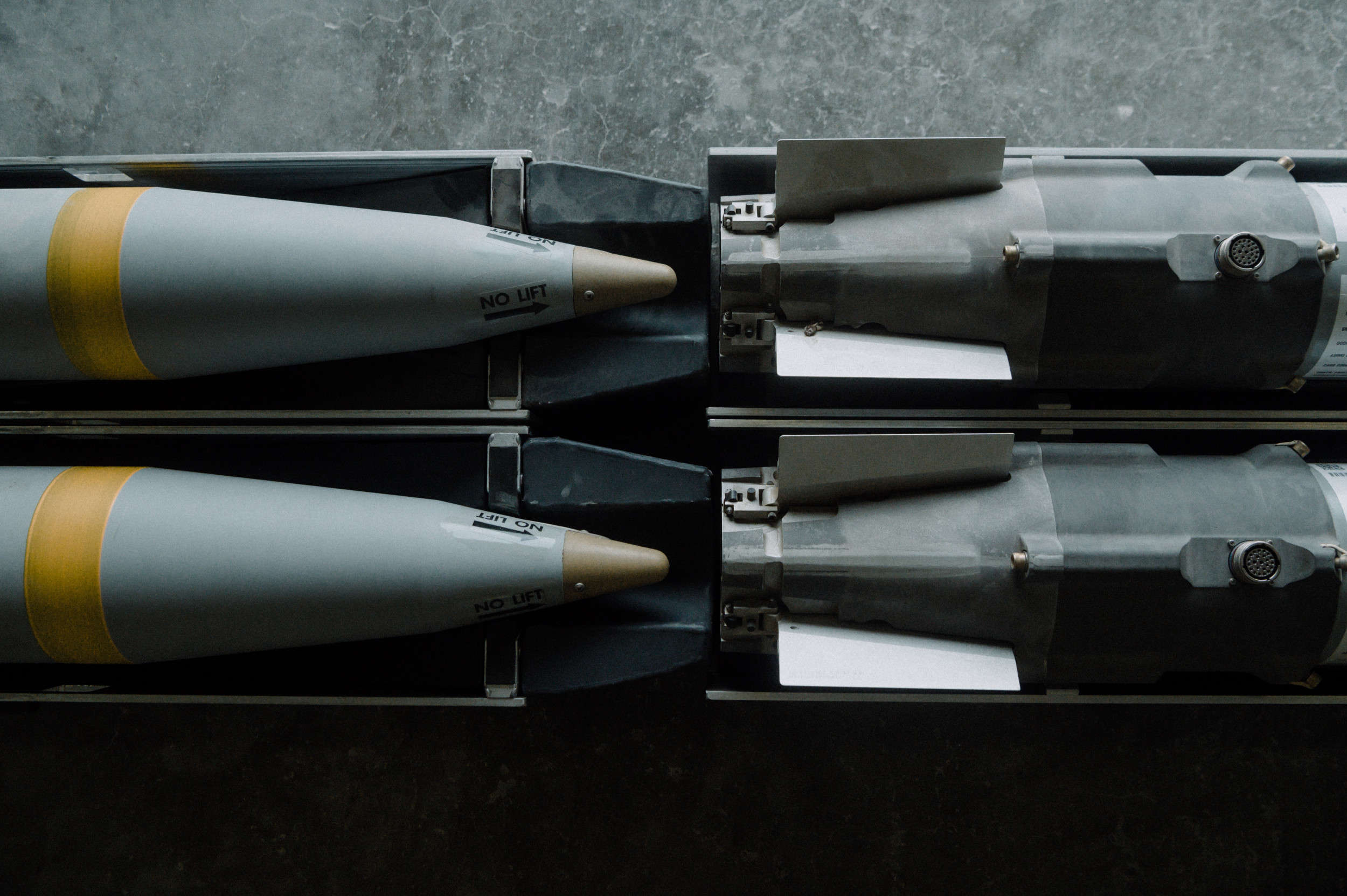
GBU-39: THE US-MADE BOMB BEING USED IN TWO WARS
Munition debris found at the site of an Israeli airstrike in Rafah, which killed dozens of people at a refugee camp on Sunday, revealed that the bombs used were manufactured in the United States, according to several weapon experts.
Footage of the debris showed parts of what those experts said was a GBU-39 Small Diameter Bomb (SDB), a precision-guided munition with a 17-kilogram explosive payload. Trevor Ball, a former U.S. Army explosive ordnance disposal technician, identified the bomb from the debris and shared his findings on social media. He highlighted the bomb's distinct features, such as the tail actuation system that controls its guiding fins.
After the video appeared on social media, weapons experts and visual evidence analyzed by various news outlets, including the New York Times, Sky News and CNN, confirmed that the bombs used in the Rafah strike were GBU-39s. The identification was consistent with a claim made by Israel Defence Forces (IDF) spokesman Rear Admiral Daniel Hagari, who said in a briefing on Tuesday that two munitions with small warheads containing 17 kilograms of explosives were used.
Israel has not confirmed the type of weapon that was used in the strike.
Israel said the Sunday airstrike targeted and killed two senior Hamas officials, and that the fire that killed dozens of civilians may have been caused by a secondary explosion at a Hamas weapons depot nearby. "These bombs were the smallest munitions that our jets could use," Hagari said.
Despite its advanced design aimed at minimizing collateral damage, the use of the GBU-39 in densely populated areas like Rafah still poses significant risks to civilian life, according to some of the experts who reviewed the videos. Richard Weir, a senior researcher at Human Rights Watch, mentioned to CBS News the "severe risk" the bomb poses, especially when used in populated areas.
Weir said that the explosive material, although relatively small, can cause substantial damage and ignite fires, particularly in environments with flammable materials and closely packed structures.
Small and Precise
The GBU-39 Small Diameter Bomb is a precision-guided munition designed for high accuracy. Manufactured in the U.S., the bomb features advanced guidance systems, including GPS-aided inertial navigation, allowing it to strike targets with a margin of error as small as five to eight meters.
One of the key features of the GBU-39 is its compact and lightweight design. Weighing approximately 285 pounds, it is smaller than many conventional bombs, including the 2,000-pound bombs that President Biden has temporarily stopped providing the Israelis. The GBU-39's small size enables aircraft to carry more munitions per sortie, enhancing the operational flexibility of air forces by allowing for multiple precision strikes in a single mission.
The bomb's tail actuation system, which controls the fins, is crucial for guiding the munition to its target. The fins deploy after release, steering the bomb during its glide phase to maintain its trajectory and ensure it reaches the designated target accurately.
The GBU-39 has been used in various military theaters since its introduction. It was first deployed in combat in Iraq and later in Afghanistan during Operation Enduring Freedom. The bomb has also been used against ISIS insurgents in Iraq and Syria and is popular among several U.S. allies, including Israel, Italy, and South Korea, due to its precision and cost-effectiveness.
The GBU-39 has also been used by Ukrainian forces against Russia. Since at least last November, the Ukrainian Air Force has deployed air-launched GBU-39 bombs in combat.
In addition, Ukraine has used the Ground-Launched Small Diameter Bomb (GLSDB), which combines the GBU-39 with a rocket-propelled motor to give it extended range. This system can strike targets up to 93 miles away and has been used to hit Russian military infrastructure in occupied territories.
The strike in Rafah that used GBU-39 munitions and inflicted heavy civilian casualties has renewed calls from international bodies and human rights organizations for Israeli to cease its operation in the southern Gaza city. Prime Minister Benjamin Netanyahu described the incident as a "tragic mishap" and pledged a comprehensive review of the strike, which killed at least 45 people, according to the Hamas-run health ministry.
Videos from the scene reviewed by Newsweek show horrific scenes of human suffering, including charred bodies that appeared to include children.
When asked about the munitions used in the Rafah strike, Pentagon deputy press secretary Sabrina Singh said: "I do not know what type of munition was used in that airstrike" and referred reporters to the IDF.
At the briefing on Tuesday, Hagari, the IDF spokesman, said the bombs alone could not have ignited a blaze the size of the one that engulfed the camp.
2024-05-29T18:57:55Z dg43tfdfdgfd